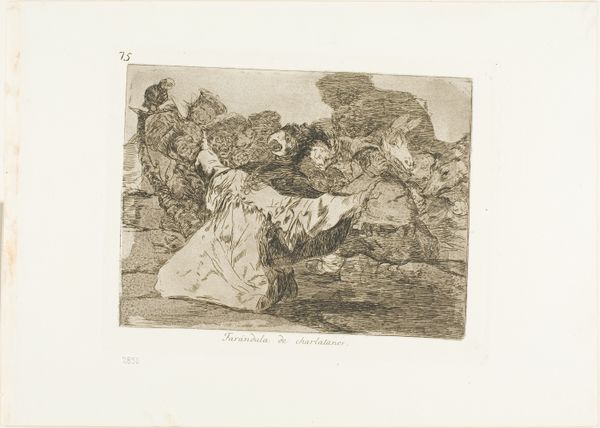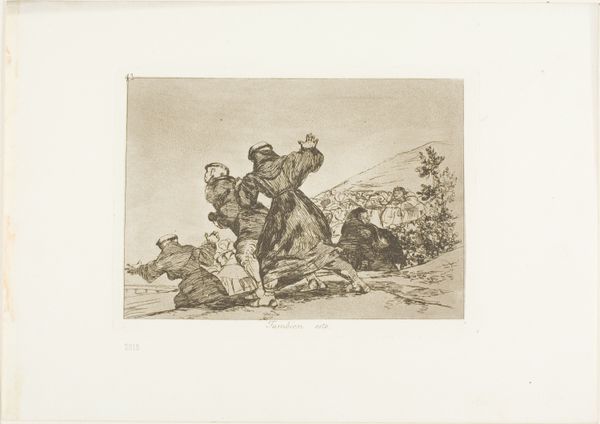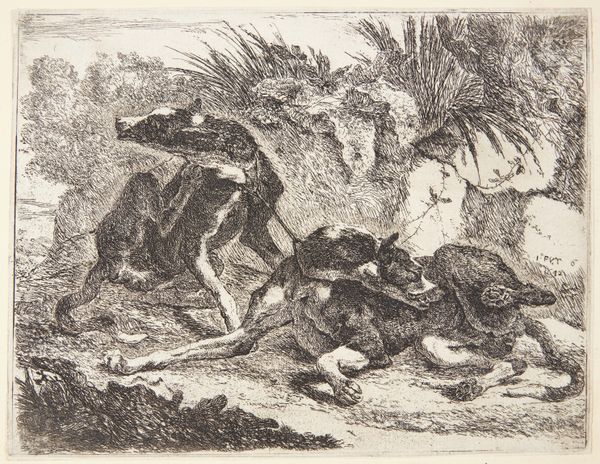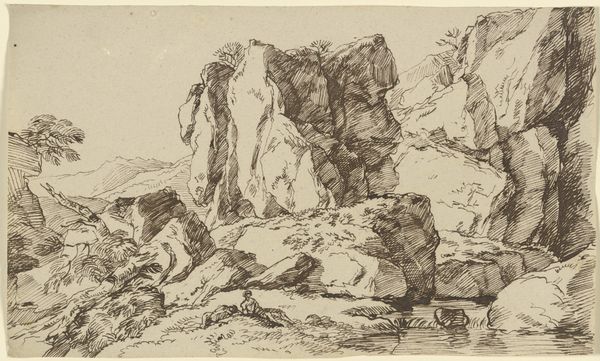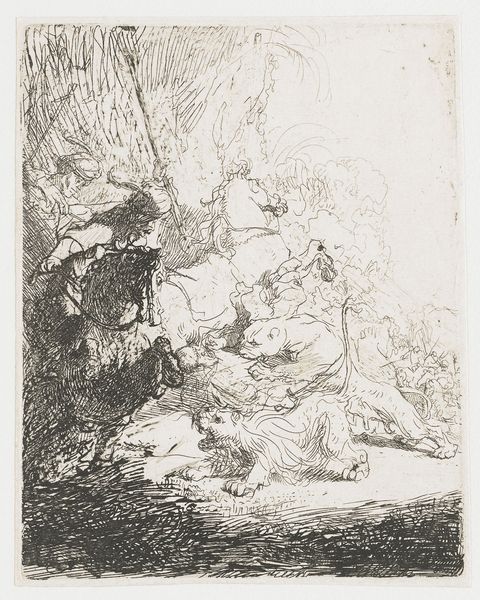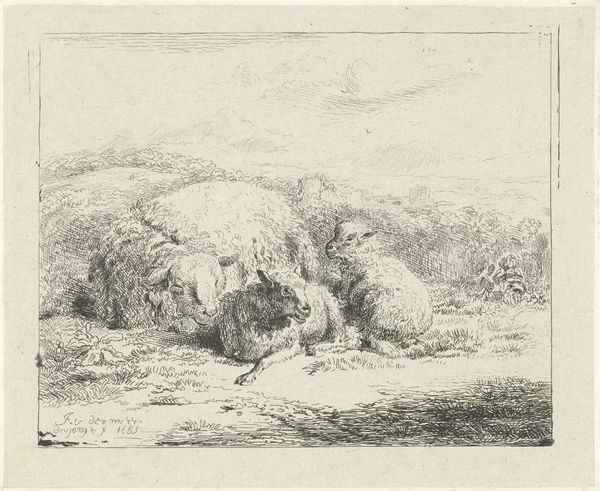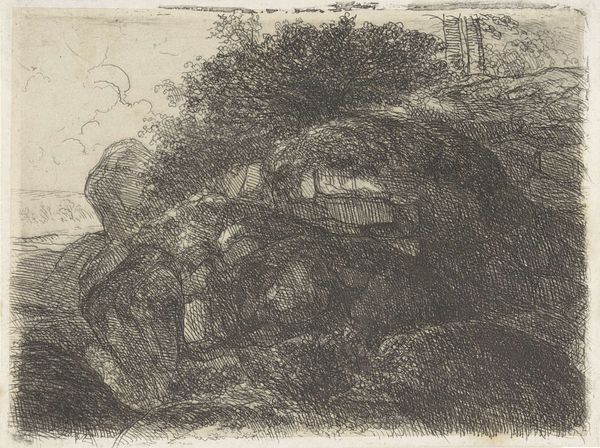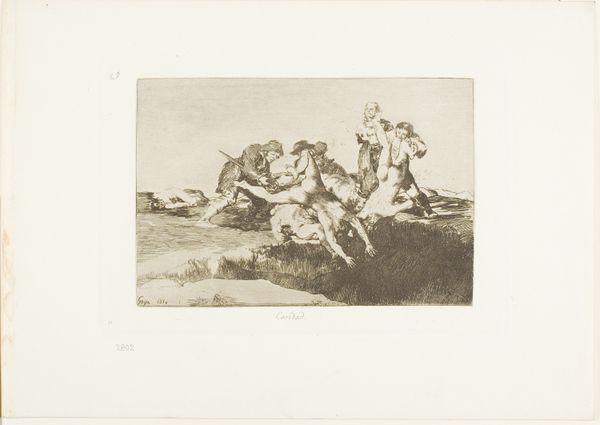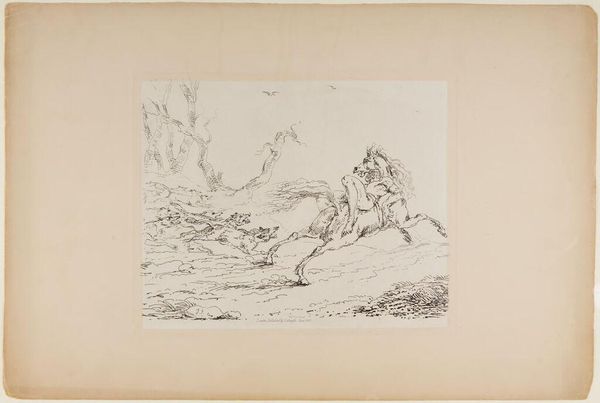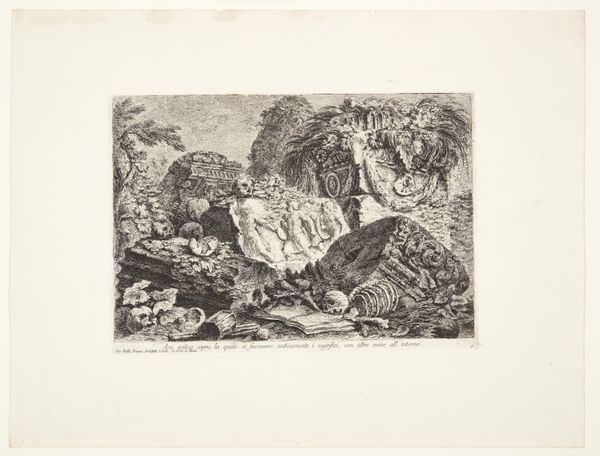
print, etching, engraving
#
allegory
#
narrative-art
# print
#
etching
#
caricature
#
figuration
#
romanticism
#
genre-painting
#
history-painting
#
engraving
Dimensions: 174 mm (height) x 215 mm (width) (plademaal), 148 mm (height) x 195 mm (width) (billedmaal)
Francisco de Goya created this etching, Kvaksalvernes Runddans, using metal, acid, and ink. Goya wasn't trained as a printmaker, but he took up the medium as a means of social critique. The image is a dense thicket of lines, reflecting the labor-intensive process of etching; the artist would have drawn through a waxy ground to expose the metal plate, then bathed it in acid, which bites into the metal to create the lines that hold the ink. He then printed the image onto paper. This was not an inherently precious process. The image is the point here. Goya used the relatively reproducible medium of etching to create a nightmarish scene of charlatans and fools. It's as if he’s saying that the world is full of people peddling false cures, and profiting from the gullibility of others. His cynical vision reflects the political turmoil of his time, and his turn away from traditional art forms. Considering the materials and processes used in making this work, you realize that its message is inextricably linked to its making.
Comments
No comments
Be the first to comment and join the conversation on the ultimate creative platform.
